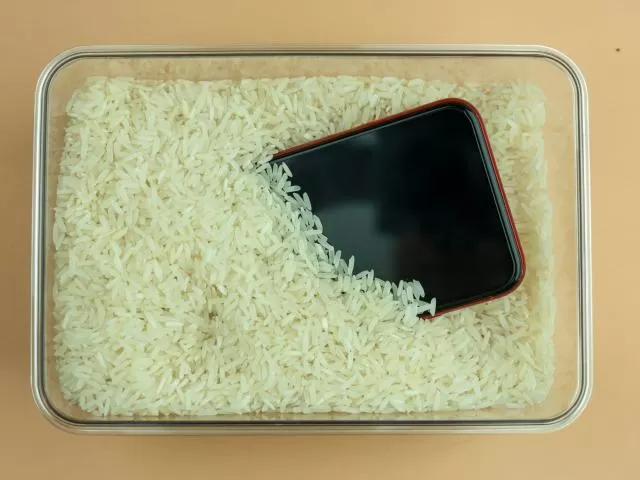10 Things You Should Never Do When Charging Your Phone

Charging your smartphone is a routine task, but doing it incorrectly can damage your device, reduce battery life, or even pose safety risks. To keep your phone in top shape and avoid potential hazards, here are 10 things you should never do when charging your phone, along with practical tips to charge safely and efficiently.
1. Using a Damaged Charger or Cable
One of the most dangerous mistakes is using a frayed, bent, or damaged charging cable or adapter. Exposed wires or broken connectors can lead to electric shocks, short circuits, or even fires. Damaged cables may also deliver inconsistent power, which can harm your phone’s battery or internal components.
What to do instead: Inspect your charger and cable regularly for signs of wear, such as frayed insulation or bent pins. Replace damaged accessories with manufacturer-approved or certified alternatives. Avoid cheap, unbranded cables, as they may not meet safety standards.
2. Charging on Soft Surfaces
Charging your phone on a bed, couch, or pillow might seem convenient, but these soft surfaces can block ventilation and trap heat. Overheating is a major cause of battery degradation and, in rare cases, can lead to fire hazards.
What to do instead: Place your phone on a hard, flat surface like a table or desk while charging. Ensure there’s enough airflow around the device to dissipate heat. If you use a wireless charger, make sure it’s designed to prevent overheating.
3. Using Knockoff or Incompatible Chargers
Not all chargers are created equal. Using knockoff, unbranded, or incompatible chargers can deliver improper voltage or current, damaging your phone’s battery or circuitry. These chargers often lack safety certifications and may not support fast-charging protocols correctly.
What to do instead: Always use the charger that came with your phone or a certified replacement from a reputable brand. Look for certifications like USB-IF, CE, or MFi (for Apple devices) to ensure compatibility and safety. If you’re unsure, check your phone’s manual or manufacturer’s website for recommended accessories.
4. Leaving Your Phone Charging Overnight Unattended
While modern smartphones have built-in mechanisms to prevent overcharging, leaving your phone plugged in overnight unattended is still risky. Non-smart chargers or faulty cables can bypass these protections, stressing the battery or causing overheating. In rare cases, unattended charging can lead to fire hazards if something goes wrong.
What to do instead: Charge your phone during the day when you can monitor it. Unplug it once it reaches 100%, or use a smart plug with a timer to limit charging duration. Most phones also support optimized charging features that slow charging at higher percentages to reduce battery wear—enable this in your settings if available.
5. Charging in Extreme Temperatures
Lithium-ion batteries, used in nearly all smartphones, are sensitive to temperature extremes. Charging your phone in very hot environments (above 95°F/35°C, such as in direct sunlight or a hot car) or freezing conditions (below 32°F/0°C) can degrade the battery’s capacity and lifespan. Extreme heat can also damage internal components.
What to do instead: Charge your phone in a cool, well-ventilated area at room temperature (ideally 68–77°F/20–25°C). If your phone feels unusually warm during charging, unplug it and let it cool down before resuming. Avoid leaving your phone in hot or cold environments, like a car, for extended periods.
6. Using Your Phone Intensively While Charging
Playing graphically intensive games, streaming videos, or using power-hungry apps while charging generates significant heat. This can slow down the charging process, stress the battery, and potentially damage internal components over time. Wireless charging, in particular, can exacerbate heat buildup during heavy use.
What to do instead: Let your phone charge undisturbed whenever possible. If you need to use it, stick to light tasks like texting or browsing. For gaming or streaming, wait until the phone is unplugged to avoid excessive heat. If your phone supports fast charging, use it to minimize the time spent plugged in.
7. Covering the Phone While Charging
Placing objects on top of your phone or wrapping it in a case that traps heat while charging can lead to overheating. Thick cases, blankets, or other items can block ventilation, causing the phone to run hotter than normal and potentially damaging the battery.
What to do instead: Remove any heavy or insulating cases before charging, especially if you’re using a fast or wireless charger, which generates more heat. Keep the phone uncovered and avoid placing items on top of it. If you notice your phone getting warm, ensure it has proper airflow.
8. Charging Near Water or in Humid Areas
Water and electricity don’t mix. Charging your phone near a sink, in a bathroom, or in a highly humid environment increases the risk of electric shock or corrosion of the charging port. Even water-resistant phones can be damaged if moisture seeps into the port during charging.
What to do instead: Charge your phone in a dry, well-ventilated area away from water sources. If your phone gets wet, dry it thoroughly (especially the charging port) before plugging it in. Some phones have moisture detection alerts—heed these warnings and avoid charging until the port is dry.
9. Ignoring Warning Signs
If your phone, charger, or cable feels unusually hot, emits a burning smell, sparks, or triggers error messages (like “accessory not supported” or “slow charging”), these are red flags. Continuing to charge under these conditions can damage your device or create safety hazards.
What to do instead: Stop charging immediately if you notice any unusual behavior. Inspect the cable, charger, and phone for damage. Try a different outlet or charger to isolate the issue. If the problem persists, contact your phone’s manufacturer or a certified repair service. Never ignore signs of malfunction.
10. Consistently Letting the Battery Drain to 0% Before Charging
While older nickel-based batteries benefited from full discharges, modern lithium-ion batteries do not. Repeatedly letting your phone’s battery drop to 0% before charging can stress the battery, reducing its overall capacity and lifespan over time.
What to do instead: Keep your battery level between 20% and 80% for optimal health. Partial charges are better than full cycles for lithium-ion batteries. Many phones offer battery health settings that limit charging to 80–85% to extend lifespan—enable these if available. Charge your phone whenever convenient rather than waiting for it to hit 0%.
Final Thoughts
By avoiding these 10 common mistakes, you can protect your smartphone, extend its battery life, and charge safely. Always prioritize manufacturer-approved accessories, charge in a safe environment, and pay attention to your phone’s behavior during charging. Small changes to your habits—like charging on a hard surface, avoiding extreme temperatures, and keeping your battery in the 20–80% range—can make a big difference in your device’s performance and longevity.
For the latest recommendations specific to your phone model, check your manufacturer’s guidelines or support website. Stay safe and keep your phone powered up the right way!





